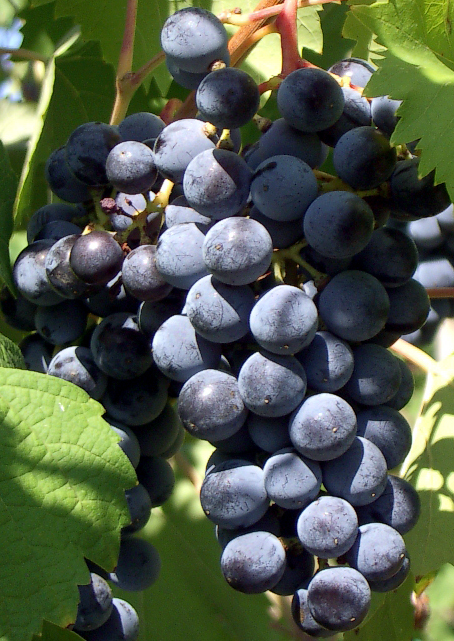SANGIOVESE IS TO ITALY AS CABERNET
STANDS TO FRANCE: THEY ARE WINES THAT EXPRESS AN IDENTITY
OF VITICULTURE AND WINE-MAKING OF A COUNTRY.
Giacomo Tachis, oenologist
HISTORY OF SANGIOVESE
Sangiovese is the undisputed king of red wines in central Italy where it is present in practically every area, and in its different clonal varieties it continues to prove its undisputed qualities thanks also to the various expressions of the territories in which it is grown.
Ampelographers believe that Sangiovese’s place of origin is the Apennine zone between Tuscany and Romagna, areas where it still represents the most important red grape.
Reading a study published in 1939 by the National Federation of Provincial Consortia among Agricultural Producers, you learn that Sangiovese was widespread in the hills of Romagna and that the quality was equal to the most famous Tuscan wines: in fact, visitors to the First exhibition-market of typical wines, held in Siena from August 3 to 18, 1933, had particularly appreciated wines made from Sangiovese di Romagna. The same study highlights the variability and adaptation of the Sangiovese grape variety and points out that: as has been pointed out, there are differences in the production of the same province of Forlì, differences that, while not profound, make the Sangiovese of one area stand out from that of another, although most of the time they are not very distant from each other ( e.g. Predappio, Bertinoro, Modigliana, Castrocaro etc..).
The origin and provenance of Sangiovese is very difficult to identify: news about one of the best known and most cultivated grape varieties in Italy is very fragmentary and unreliable. To obtain information we must first wait until the 16th century, when Soderini, in 1590, described it in his treatise “The Cultivation of Vines,” saying: “the Sangiocheto or Sangioveto is a remarkable vine for its regular productivity.”
But it is believed that the famous grape was already known more than 2,000 years ago and was used by the Etruscans for wine production.
The origin of the name is also uncertain, and there are many hypotheses: some want it to derive from St. John, some from dialectal forms (from “san giovannina,” an early grape, given its early budding), and some swear it comes from Jupiter’s blood (Sanguis Jovis). It is also said to derive from Etruscan whose word sani-sva (wine of the fathers or for an offering to the fathers) has very strong similarities with the word sangiovese in the Romagnolo dialect: sanzvè.
Widespread mainly in Tuscany, where it takes on various names (Brunello in Montalcino, Prugnolo in Montepulciano, Morellino in Grossetano, Sangioveto in Chianti) Sangiovese has found its second home in Romagna.


SANGIOVESE IS THE UNDISPUTED KING OF THE RED WINES OF CENTRAL ITALY, WHERE IT BEAUTIFULLY TRANSLATES THE VARIOUS TERRITORIAL EXPRESSIONS.
Undisputed King
The production area of the Predappio DOC is developed along the right and left banks of the Rabbi River. The soils of Pliocene origin with a limestone-clay base present an important sandy presence in the northern part; as the valley rises, arenaceous intrusions appear, while in the center of the Rabbi valley spungone emerges. In contrast, chalky marls and sulfur are found in the Predappio Alta area.
From Predappio, come many of the Sangiovese clones approved today, which for their quality have found wide acceptance outside the region itself.
Intense ruby red to garnet in color, after long aging the shade may also take on orange tones.
The aromas of Sangiovese are mainly oriented toward red and black fruits including cherry, black cherry, blackberry and plum; up to licorice, orange peel and menthol in longer aging.
Among the floral aromas, violet is the most characteristic, followed by rose aroma.
The combination that mainly characterizes Sangiovese, although it is also shared by other grapes, is black cherry and violet.
Other fruit aromas that can be perceived in Sangiovese are currant, strawberry, cherry, raspberry and blueberry.
